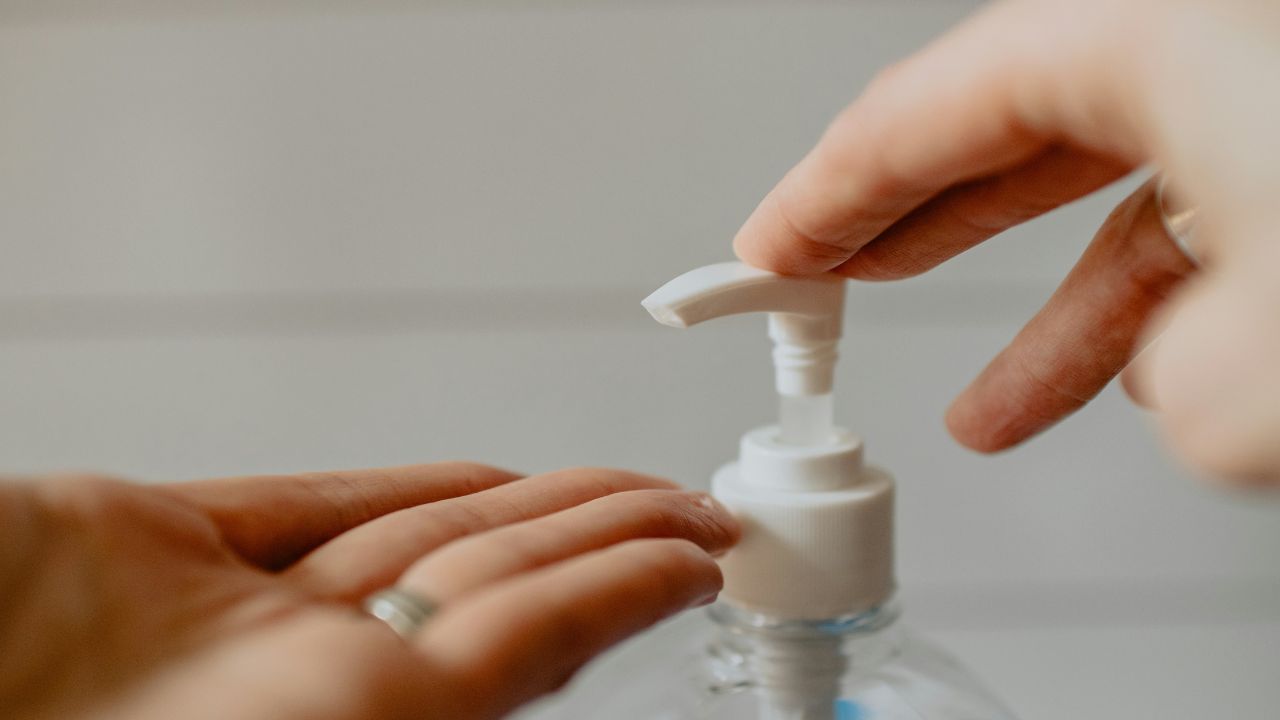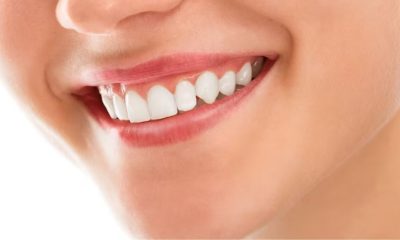HEALTH
Understanding the Potential Health Implications of Vaping: A Dive into the Research

Key Takeaways:
- Vaping is not merely an alternative to smoking but presents its own set of potential health risks that need further study.
- Recent research has provided some insights into the health implications of vaping, but long-term effects remain largely unknown.
- Scientifically-backed information is critical to making informed decisions regarding vaping, especially in light of varying public health guidelines.
Dissecting the Cloud: What is Vaping?
Vaping has become an increasingly ubiquitous scene – devices that deliver a flavored aerosol are spotted in the hands of many, from young city dwellers to long-time smokers seeking a change. These devices produce a vapor the user inhales by heating a liquid that often contains nicotine, propylene glycol, vegetable glycerin, and various flavorings. A key difference from traditional smoking is the absence of smoke from combustion; the vapor is meant to be cleaner and, purportedly, less harmful. However, this has been a matter of intense debate among health professionals and researchers across the globe.
Given its novelty and the technological advancements in vaping devices, many users are captivated by the practice, believing it to be a safer alternative to smoking. However, several questions arise about the safety and long-term health implications of vaping. From a medical standpoint, the significant question remains: does vaping cause cancer? This singular question generates considerable anxiety and confusion, particularly given the multi-faceted nature of cancer and the myriad substances involved in vaping. Thus, understanding vaping’s impact on health is crucial for individual users and public health.
The Chemicals Inhaled: Beyond Nicotine
Nicotine may be the headline-grabber when it comes to the contents of an e-cigarette, but it’s not the sole occupant. The combination of propylene glycol and vegetable glycerin creates the base for the liquid that becomes vaporized. These substances are generally recognized as safe for use in food products; however, evidence on the long-term safety of inhaling them is scarce. Including chemical flavorings, often like those found in foods, adds complexity. While such flavorings are tested for ingestion, there is a gap in official safety confirmation regarding inhalation, which could induce a differential biological response.
When inhaled, the long-term effects of these compounds are an area where research plays a critical catch-up game. As the popularity of vaping continues to expand, researchers are working to keep pace, evaluating the potential health consequences of the myriad chemicals that users are involuntarily experimenting with through vaping. It is in this context that the health risks, not least of which include possibilities such as respiratory diseases, cardiovascular issues, and, indeed, malignancies, remain of pivotal concern.
Debating the Cancer Connection: What the Studies Say
In our collective psyche, the threat of cancer is often associated with a plume of cigarette smoke. Yet, as we grapple with the rising wave of vaping, there is a pressing need to scrutinize similar threats that might be lurking in a cloud of vapor. Initial studies have been both revealing and frustrating. While some compounds known to cause cancer in tobacco smoke are either less abundant or absent in e-cigarette vapor, there is compelling concern over the presence of other potentially harmful substances that may be carcinogenic.
Research is in a nascent stage, so declarations of safety seem premature. Public health bodies and academic scholars call for more substantial evidence before drawing firm conclusions. Questions about whether vaping is a cancer risk remain unanswered with the certainty required for public guidance. Consequently, further longitudinal studies are imperative to map the true extent of any carcinogenic association with vaping.
Respiratory Health and Vaping: Knowns and Unknowns
The impact of vaping on respiratory health has been another contentious topic. Reports have emerged of users experiencing cough, throat irritation, and shortness of breath after vaping – symptoms that are seen as red flags by health professionals. Questions are being asked whether long-term vaping could cause damage akin to traditional smoking, which has been indisputably linked to a variety of pulmonary diseases.
Cases of more acute respiratory distress related to vaping have also been reported, adding urgency to the research being undertaken in this area. The discovery of a link between some vaping products and a severe condition known as “popcorn lung” – or bronchiolitis obliterans – exacerbated concerns. While researchers are intensifying their efforts to understand the full impact of vaping on lung health, concrete answers are still clouded by the constantly evolving nature of vaping products and practices.
Vaping and Cardiovascular Risk: An Unseen Threat?
The cardiovascular system is not spared the enigma of vaping’s reach. Nicotine, well-known for its stimulant effects, can increase heart rate and elevate blood pressure – two indicators linked with heart disease over the long term. The lack of combustion in vaping does eliminate some of the known threats presented by traditional cigarettes. Yet, it does not grant it a free pass in cardiovascular health. Investigations are pointing toward harmful effects on the heart associated with vaping, though the depth and breadth of impact are not yet precisely charted.
This ambiguity in data presents users with a dilemma. For those turning to vaping as a harm-reduction strategy or cessation aid, the balancing of short-term benefits against long-term risks is complex. Echoing the sentiment of the entire field, the need for robust, evidence-based research to light the way forward is crucial, particularly in unraveling the nuanced implications of vaping on heart health.
Adverse Effects and Emergency Room Visits
The increase in emergency room visits linked to vaping is noteworthy, with a specific focus on acute lung injury cases. Between 2019 and early 2020, thousands of patients across the United States were admitted with a condition that has been informally called ‘EVALI’ (e-cigarette or vaping product use-associated lung injury). These incidents, some of which were fatal, showcase the grim reminder that vaping entails risks not fully understood or anticipated.
A subsequent report on the 2019 outbreak of lung injury threw a spotlight on the hazards associated with certain vaping products, many of which contained vitamin E acetate, a substance used to dilute THC-containing e-liquids. The regulatory fallout from these events continues to unfold as the FDA and other regulatory bodies work towards stringent product assessments and user protections.
Navigating the Myths vs. Reality of Vaping
The discourse around vaping is mired with myths that range from wildly over-optimistic portrayals of safety to doomsday predictions of health. Busting these myths is a Herculean task, requiring a blend of robust scientific findings, public health messaging, and education. One stubborn myth is the belief that vaping is an effective and wholly safe smoking cessation tool. While there is some evidence supporting the role of vaping in smoking reduction, unequivocal endorsements are hampered by the unknown long-term consequences.
Further hindering clarity is the propagation of misinformation, either through social media, marketing, or word-of-mouth, inflating the perceived benefits of vaping while sidelining discussions of risk. Legitimate research and authoritative health resources are critical in navigating the line between myth and reality in the vaping conversation.
Vaping Among Teens: A Growing Concern for Public Health
The prevalence of vaping among teenagers is perhaps one of the most alarming trends, with recent studies revealing a substantial uptick in e-cigarette use in this demographic. Adolescents are particularly susceptible to nicotine addiction, and the long-term implications for this generation’s health could be profound. This concern has prompted governments and health organizations to act, attempting to stem the flow of vaping products to minors and to equip them with the knowledge to make healthier choices.
It has taken note of this worrying development, releasing an advisory detailing the rise of youth vaping. The advisory calls on parents, teachers, health professionals, and policymakers to cooperate in addressing the spread of this public health challenge. The push for tighter marketing regulations, especially regarding flavors and branding targeted at young people, is part of a concerted effort to counteract this trend.
FDA Regulation and the Future of Vaping
Regulatory oversight is integral in ensuring public health safety, and the FDA has responded to the vaping phenomenon with measures intended to evaluate and control the industry. Requiring ingredient disclosure, manufacturing standards, and pre-market authorization are some of the steps taken thus far. However, the regulatory landscape is dynamic and continues to evolve as more information about the risks and benefits of vaping comes to light. Vape manufacturers and consumers must stay vigilant, adapting to new regulations to ensure safety and compliance.
The ongoing dialogue between regulatory bodies, the vaping industry, and public health organizations illustrates the complex nature of integrating a new product into the existing framework of consumer safety. As new rules come into play and the industry matures, the emphasis on protecting consumers, particularly the most vulnerable populations, remains paramount.
Moving Forward: Key Takeaways for Informed Choices
The landscape of vaping is rife with uncertainties, but what is clear is the need for ongoing research and regulation. Consumers are encouraged to stay updated with information from trustworthy sources and to evaluate the myriad claims surrounding vaping critically. As the body of evidence grows, individuals will be better positioned to make informed decisions about whether vaping is an acceptable risk for them.
Understanding the potential health implications of vaping extends beyond individual concern—it’s a question of public interest. With diverse parties, from manufacturers to health agencies, actively contributing to the body of knowledge, it’s anticipated that the coming years will enhance clarity and guidance for those navigating the vaping landscape. Until then, caution and informed skepticism may be the wisest approach.
HEALTH
aiotechnical.com health: Revolutionizing Personal Health Monitoring

Welcome to the future of personal health monitoring with aiotechnical.com health! In a world where technology is advancing at lightning speed, keeping track of our well-being has never been more convenient and insightful. Join us on a journey as we explore how this revolutionary platform is transforming the way we approach healthcare and empowering individuals to take control of their own health like never before. Let’s dive in and discover the endless possibilities that lie ahead with aiotechnical.com health!
The Importance of Personal Health Monitoring
In today’s fast-paced world, taking charge of our health has never been more crucial. Personal health monitoring plays a vital role in helping individuals stay proactive about their well-being. By tracking key metrics like heart rate, sleep patterns, and exercise levels, we can gain valuable insights into our overall health status.
Regular monitoring allows us to detect potential issues early on and take preventive measures before they escalate. It empowers us to make informed decisions about lifestyle changes and treatments that can improve our quality of life. With the rise of innovative technologies like aiotechnical.com health, monitoring our health has become more convenient and efficient than ever before.
The ability to access real-time data through user-friendly interfaces makes it easier for people to stay on top of their health goals. By leveraging AI-powered analytics and personalized recommendations, individuals can tailor their wellness journey according to their unique needs and preferences.
How aiotechnical.com health is Revolutionizing the Industry
Have you ever imagined a world where personal health monitoring is not just a routine, but an empowering experience? Aiotechnical.com health is leading the charge in revolutionizing the industry by offering cutting-edge technology that puts individuals at the forefront of their own well-being.
Gone are the days of passive monitoring; with aiotechnical.com health, users have access to real-time data and insights that allow them to make informed decisions about their health. The platform combines AI algorithms and advanced sensors to provide accurate and personalized feedback tailored to each user’s needs.
What sets aiotechnical.com health apart is its user-centric approach – putting control back into the hands of individuals. By leveraging technology, this platform empowers users to take proactive steps towards improving their overall health and well-being. Say goodbye to one-size-fits-all solutions; aiotechnical.com health offers personalized recommendations based on individual goals and preferences.
In a rapidly evolving digital landscape, aiotechnical.com health stands out as a game-changer in personal health monitoring. With its innovative features and seamless user experience, it’s no wonder why this platform is reshaping the way we approach our wellness journey.
Features and Benefits of the Platform
Imagine having a personal health monitoring platform that not only tracks your progress but also provides valuable insights to help you reach your goals. With aiotechnical.com health, you can do just that!
One of the standout features of this platform is its user-friendly interface, making it easy for anyone to navigate and understand their health data. From tracking daily steps to monitoring heart rate and sleep patterns, aiotechnical.com health covers a wide range of metrics to give you a comprehensive view of your well-being.
The real magic happens with the AI-powered algorithms behind the scenes. These algorithms analyze your data in real-time and provide personalized recommendations based on your unique health profile. Whether it’s suggesting ways to improve sleep quality or reminding you to stay hydrated throughout the day, aiotechnical.com health is like having a virtual wellness coach by your side 24/7.
Real-Life Examples and Success Stories
Imagine a young woman named Sarah who struggled with managing her health due to a busy schedule. With aiotechnical.com health, she was able to easily track her daily activities, monitor her vitals, and receive personalized recommendations.
Another success story involves John, a fitness enthusiast looking to optimize his workouts. By using the platform’s advanced analytics and real-time feedback, he was able to adjust his exercise routine for better results.
Furthermore, there’s Lisa, a senior citizen who needed assistance in keeping tabs on her medication schedule. Thanks to the reminders and alerts feature on aiotechnical.com health, she now takes her medications on time without fail.
These real-life examples showcase how individuals from different walks of life have benefitted from the innovative capabilities of aiotechnical.com health.
Future Developments and Expansion Plans
Exciting times lie ahead for aiotechnical.com health as they look towards future developments and expansion plans. The platform is constantly evolving to meet the ever-changing needs of users in the realm of personal health monitoring.
With a focus on innovation, AI integration, and user feedback, aiotechnical.com health aims to stay at the forefront of technological advancements in the healthcare industry. This dedication ensures that users receive cutting-edge solutions that enhance their overall well-being.
Conclusion
In a world where personal health monitoring is becoming increasingly vital, aiotechnical.com health stands out as a game-changer. By leveraging cutting-edge technology and innovation, this platform is revolutionizing how individuals track and manage their well-being.
With features like real-time data analysis, personalized insights, and seamless integration with wearable devices, aiotechnical.com health empowers users to take control of their health journey like never before. The platform’s user-friendly interface makes it easy for anyone to access valuable information and make informed decisions about their health.
As we look towards the future, the potential for aiotechnical.com health to continue expanding its offerings and reach more individuals globally is truly exciting. With ongoing developments in AI and healthcare technology, the possibilities for enhancing personal health monitoring are endless.
Guide
The Role of Psychotherapists in Mental Health Recovery: A Deep Dive

Key Takeaways:
- The crucial role psychotherapists hold in the mental health recovery process.
- An understanding of various psychotherapy techniques and how they are applied.
- An appreciation for the unique challenges faced in different urban settings, such as New York.
Introduction
Psychological well-being is a critical component of overall health, yet the journey toward mental health recovery can often be complex and deeply personal. It requires a supportive network and the guidance of skilled professionals. At the heart of this process are psychotherapists whose expertise and compassionate approach help to steer individuals toward healing and growth. In bustling urban environments like New York, the role of psychotherapists is even more nuanced due to the unique stressors intrinsic to city life.
In cities like New York, where the pace of life can be relentless, psychotherapists provide a vital lifeline for individuals navigating the complexities of urban living. Their ability to understand the intricacies of city life allows them to tailor their therapeutic approaches to address the specific challenges faced by their clients. By offering a safe space for reflection and healing, New York psychotherapists play a crucial role in promoting mental wellness and resilience in the face of urban pressures.
The Journey of Mental Health Recovery
Mental health recovery is not a linear path; it’s a multifaceted journey that varies drastically from one person to another. Recovery involves managing symptoms, understanding underlying issues, and cultivating resilience. This process is grounded in the belief that recovery is possible and that it encompasses a renewed sense of purpose and a fulfilling life despite the challenges that mental health issues may present.
Individuals may encounter setbacks and triumphs throughout the mental health recovery journey, each contributing to their overall growth and resilience. It requires patience, self-compassion, and a commitment to self-care practices that support emotional well-being. With the support of mental health professionals, peers, and loved ones, individuals can navigate the complexities of recovery and emerge more robust and more empowered on the other side.
Core Functions of Psychotherapists
Psychotherapists act as navigators in the recovery journey, providing clients with the map and tools to understand and confront their battles. Beyond simply administering therapy, they play multiple roles—including educator, advocate, and confidant- crucial for empowering clients to take charge of their recovery. The therapists’ responsibilities extend to continual learning to ensure their methods reflect current practices and evidence-based research.
Psychotherapists provide a secure, accepting environment in which their patients can explore their feelings, ideas, and experiences without worrying about being judged. They tailor their approach to each individual’s unique needs, employing various therapeutic techniques and modalities to facilitate healing and growth. Additionally, psychotherapists collaborate with other healthcare professionals and community resources to provide holistic support for their clients’ well-being.
Psychotherapy Techniques and Modalities
Psychotherapy encompasses various techniques and modalities designed to address clients’ needs. These range from traditional approaches like cognitive-behavioral therapy (CBT), which helps patients identify and challenge distorted thinking patterns, to more contemporary practices like mindfulness-based stress reduction (MBSR), which encourages present-moment awareness as a tool for well-being.
Other commonly used psychotherapy techniques include dialectical behavior therapy (DBT), which focuses on building skills for managing intense emotions and improving interpersonal relationships, and psychodynamic therapy, which explores unconscious patterns and past experiences to gain insight into current struggles. Acceptance and commitment therapy (ACT) also helps clients develop psychological flexibility and live by their values. In contrast, interpersonal therapy (IPT) targets relationship issues and social functioning. Each technique and modality offers unique benefits and can be tailored to suit the individual needs and preferences of clients.
Customizing Therapy to Individual Needs
An effective psychotherapist recognizes the uniqueness of each individual—customizing treatment plans to fit the client’s personal history, personality, and goals. They use their clinical judgment to adapt techniques, whether integrating elements of different therapeutic approaches or selecting a method that resonates with the client’s communication style.
Challenges and Opportunities in Urban Mental Health
In urban centers, the pace and pressures of city life can pose specific challenges to mental health. New York psychotherapists witness firsthand the complexities of their clients’ lives against a backdrop of fast-paced societal change. They must navigate cultural diversity, socioeconomic disparities, and the anonymity often accompanying city living while providing adequate mental health care.
The Therapeutic Alliance
The success of psychotherapy often hinges upon the strength of the therapeutic alliance—the collaborative partnership between the therapist and the client. Building this alliance involves establishing trust, setting goals collaboratively, and maintaining a bond that allows for open discussion and vulnerability. This connection is the foundation upon which the recovery process is built and sustained.
Moving Beyond Stigma
The stigma surrounding mental health can be a significant barrier to seeking support. Psychotherapists play a vital role in destigmatizing mental health issues and educating clients and their communities about the normalcy of seeking help and the effectiveness of psychotherapy. They advocate for their clients’ acceptance and understanding from those around them.
Psychotherapy Outcomes and Effectiveness
Evidence-based research and clinical outcomes show the effectiveness of psychotherapy in addressing a spectrum of mental health conditions. Successful therapy can lead to enhanced coping strategies, better emotional regulation, improved relationships, and increased life satisfaction. These outcomes underscore the psychotherapist’s instrumental role in facilitating mental health recovery and resilience.
Conclusion
In conclusion, psychotherapists play a critical and multifaceted role in the recovery of those facing mental health challenges. Their expertise, personalized approach, and ability to cultivate a trusted alliance make them essential in navigating the complexities of mental health, particularly in dynamic urban settings. The journey toward mental health recovery is a courageous one, and the psychotherapist is a pivotal companion along this path. In cities like New York, the demand for such guidance is not just a matter of treatment but a necessity for sustaining the vibrancy and diversity that characterize urban life.
HEALTH
Beyond Yawns: Delving into the Underlying Reasons for Fatigue

Fatigue – that persistent feeling of tiredness and lack of energy – is a common complaint among people of all ages and backgrounds. While occasional fatigue is normal, persistent or chronic fatigue can significantly impact one’s quality of life.
Beyond simply feeling sleepy, fatigue can affect cognitive function, mood, and overall well-being. In this blog post, we will delve into the underlying reasons for fatigues, exploring both common and lesser-known factors that may contribute to this pervasive issue.
Lifestyle Factors:
One of the most common causes of fatigues is lifestyle-related. Poor sleep habits, such as staying up late or inconsistent sleep schedules, can leave you feeling tired and drained.
Additionally, excessive stress, lack of physical activity, and an unhealthy diet can all contribute to feelings of fatigues. Addressing these lifestyle factors – prioritizing sleep, managing stress, exercising regularly, and eating a balanced diet – can often alleviate fatigue significantly.
Sleep Disorders:
While poor sleep habits can contribute to fatigue, sleep disorders can also play a significant role. Conditions such as insomnia, sleep apnea, restless legs syndrome, and narcolepsy can disrupt sleep patterns, leading to daytime fatigue and impaired functioning. Seeking evaluation and treatment for underlying sleep disorders is crucial for managing fatigues effectively.
Medical Conditions:
Fatigue can also be a symptom of various underlying medical conditions. Chronic illnesses such as diabetes, heart disease, thyroid disorders, and autoimmune diseases can all cause fatigue as the body struggles to cope with ongoing inflammation and dysfunction.
Mental health conditions like depression, anxiety, and chronic stress can also manifest as fatigue due to their impact on neurotransmitters and stress hormones.
Nutritional Deficiencies:
Insufficient dietary intake may result in feelings of exhaustion and weariness. Insufficiencies in vital nutrients like iron, vitamin D, B vitamins, and magnesium can hinder the body’s ability to produce energy and regulate metabolism, thus fostering fatigues. Moreover, dehydration can exacerbate sensations of tiredness and sluggishness.
Prioritizing a well-rounded diet abundant in essential vitamins, minerals, and fluids is crucial to counteracting fatigue stemming from nutritional inadequacies. Additionally, considering over-the-counter iron supplements can be beneficial in addressing iron deficiencies and alleviating associated fatigues.
Medications and Substance Use:
Certain medications and substances can have fatigues as a side effect. Prescription medications such as antidepressants, antihistamines, and blood pressure medications can cause drowsiness and fatigue.
Similarly, recreational drugs, alcohol, and caffeine can disrupt sleep patterns and contribute to fatigues when used excessively. It’s essential to be aware of the potential side effects of medications and substances and discuss any concerns with your healthcare provider.
Hormonal Imbalances:
Hormonal imbalances, particularly in hormones like cortisol, thyroid hormones, and sex hormones, can lead to fatigue. Conditions such as adrenal fatigues, hypothyroidism, and menopause can disrupt the body’s hormonal equilibrium, impacting energy levels and overall vitality.
Addressing underlying hormonal imbalances through proper diagnosis and treatment is essential for managing fatigues effectively.
Chronic Fatigue Syndrome (CFS):
Chronic Fatigue Syndrome, also known as Myalgic Encephalomyelitis (ME), is a complex and poorly understood condition characterized by profound fatigue that is not alleviated by rest.
Individuals with CFS often experience additional symptoms such as muscle pain, cognitive difficulties, and post-exertional malaise. While the exact cause of CFS remains unknown, it is believed to involve a combination of genetic, environmental, and immune-related factors.
Environmental Factors:
Environmental factors such as exposure to pollutants, allergens, and extreme temperatures can also contribute to fatigues. Poor indoor air quality, allergens like pollen or mold, and workplace hazards can all impact respiratory health and energy levels. Additionally, living in noisy or crowded environments can disrupt sleep and contribute to fatigue over time.
In Conclusion
Fatigue is a multifaceted issue with a wide range of underlying causes. While occasional tiredness is normal, persistent or chronic fatigues may indicate an underlying health problem that requires attention. By addressing lifestyle factors, seeking medical evaluation for underlying conditions, ensuring proper nutrition, and managing stress effectively, it is possible to overcome fatigue and reclaim your energy and vitality.
If you’re experiencing persistent fatigue’s that interferes with your daily life, don’t hesitate to consult with a healthcare professional for personalized evaluation and treatment.
-

 TECHNOLOGY2 months ago
TECHNOLOGY2 months agoRevolutionizing Customer Experience: The Rise of Tech-Driven Dining
-

 HEALTH2 months ago
HEALTH2 months agoThe Impact of Dental Insurance Brokers on Consumer Choices
-

 SEO1 month ago
SEO1 month agoExploring the Impact of SEO on Fashion E-commerce Success
-

 TECHNOLOGY1 month ago
TECHNOLOGY1 month agoThe Evolution of Self-Service: How Self-Storage Kiosks Are Shaping the Future of Personal Storage
-

 BUSINESS1 month ago
BUSINESS1 month agoIdentifying the Right Fit: Essential Qualities to Look for When Hiring Office Personnel
-

 FASHION1 month ago
FASHION1 month agoFreetress Water Wave Hair: Enhance Your Style with Versatile Beauty
-

 SPORTS2 months ago
SPORTS2 months agoSports and Learning Complex: Unveiling the Synergy
-

 HEALTH3 weeks ago
HEALTH3 weeks agoSmile Wide: The New Dentist’s Guide to Launching a Successful Career

